A Brief History of Preseason Pointlessness

When is a pro football game not a pro football game? When it happens in August. When the biggest stars hardly play more than a quarter. When die-hard fans are ashamed to admit they watched beyond halftime. An NFL preseason football game is not a traditional football product. It is the New Coke of football products, an adulterated version that’s not different enough from the original to be anything other than pointless.
That wouldn’t be so bad if preseason games didn’t catch the nation at a time when it is most desperate to satisfy its football jones. Other pro sports know how to stage a compelling exhibition. MLB goes local with spring training. The NBA goes international. The NHL keeps it short, just two weeks, and this year will play 13 exhibition games in non-NHL venues. Why can’t the most popular sport in America—which has turned paint-drying affairs such as the combine and the draft into must-see events—get its preseason right?
Unlike training camp, preseason games don’t put fans in the middle of position battles. And they don’t predict a team’s future any better than a coin flip would. The 2006 Colts slogged through a winless August before going 12-4 and winning Super Bowl XLI. Two years later the Lions started the summer undefeated, then cooled off to an alltime worst 0-16. The preseason might quench the thirst for football, but the calories are all empty. And yet fans today don’t know how good they’ve got it. Back in the day the preseason grind was much worse.
A ROAD SHOW
Pro football’s path to legitimacy was one long preseason. When it began in 1920, all 14 teams were clustered in Northern industrial towns, and all of the games were exhibitions. Teams arranged their own meetings with rivals inside and outside the league, and every contest counted in the standings. After the Decatur Staleys, the forerunners to the Chicago Bears, finished second with a 10-1-2 record compiled largely against creampuffs in 1920, the league bylaws were amended so that only intraleague games would count in the standings.
Teams played exhibitions before the season, after the season, sometimes during the season on a day between league games.
But that didn’t stop teams from scheduling outside opponents. In addition to the exposure, there was money to be made. University of Illinois tailback Red Grange showed just how much the market could bear when he quit school early to set off on 19-game, 66-day national tour in 1925. His take: $100,000 in salary and gate receipts, a fortune during an era when the average pro team sold for a couple hundred dollars.
So pro football hit the road. Hard. Teams played exhibitions before the season, after the season, sometimes during the season on a day between league games. The entrenched sports were baseball and college football, and it wasn’t until the NFL began taking on amateurs in the Chicago College All-Star Game in 1934 (a tradition that lasted all the way into the mid-1970s; see photo gallery below) that the public considered devoting more time to the professionals. The only time the barnstorming was ever in danger was during World War II, when the government grew concerned that the league’s itinerant schedule was hogging vital resources. Ultimately commissioner Elmer Layden, better known as one of Notre Dame’s Four Horsemen, convinced Uncle Sam it wouldn’t bring about the apocalypse. Football games, he argued, were necessary, even preseason games.
A Brief History of Preseason Pointlessness
1972 COLLEGE ALL-STAR GAME The traditional kickoff to the preseason, played at Soldier Field in Chicago, pitted the reigning NFL champions against a team of former collegiate stars from the previous season. In ’72 Roger Staubach and the Cowboys upheld the league’s honor against the upstarts. SI photographers Walter Iooss Jr. and Heinz Kluetmeier were there. (Walter Iooss Jr./SI)
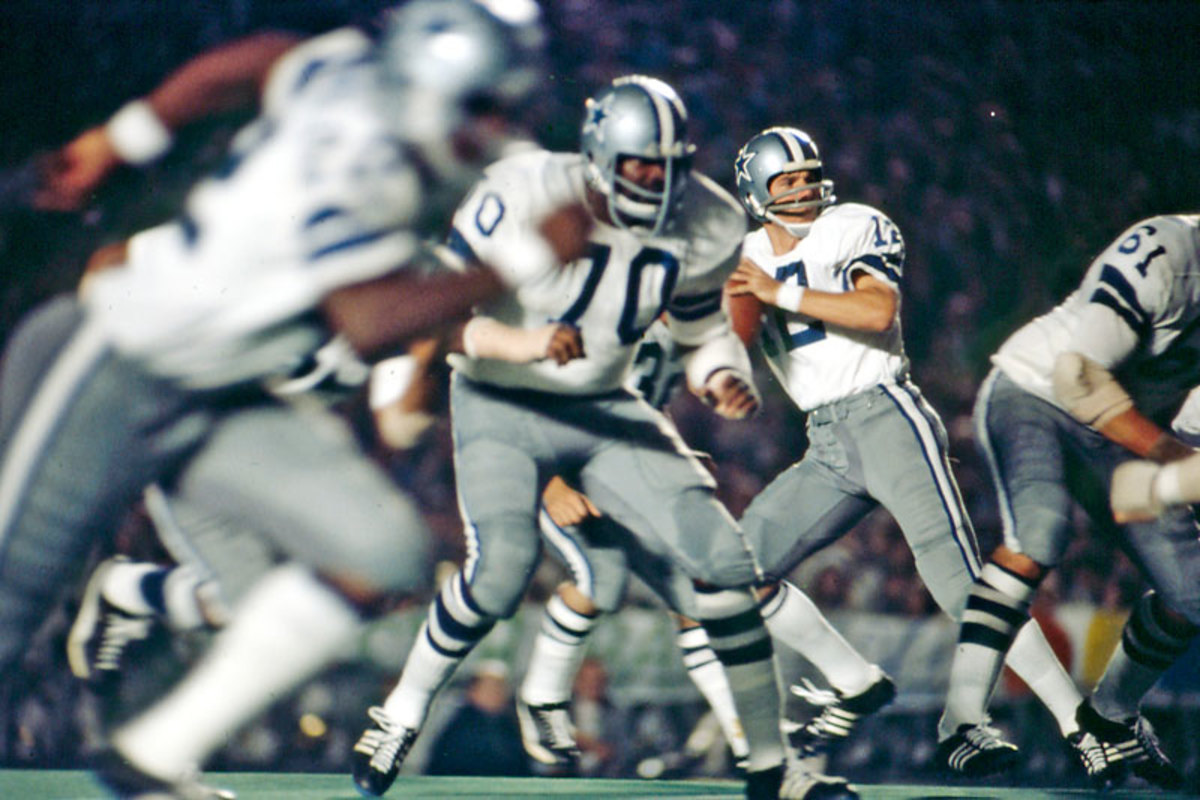
JUST A PINCH Fullback Walt Garrison, who would go on to have his only Pro Bowl season in ’72, carried for the Boys. (Heinz Kluetmeier/SI)

DON’T DO IT Staubach was his typical scrambling self . . . (Walter Iooss Jr./SI)
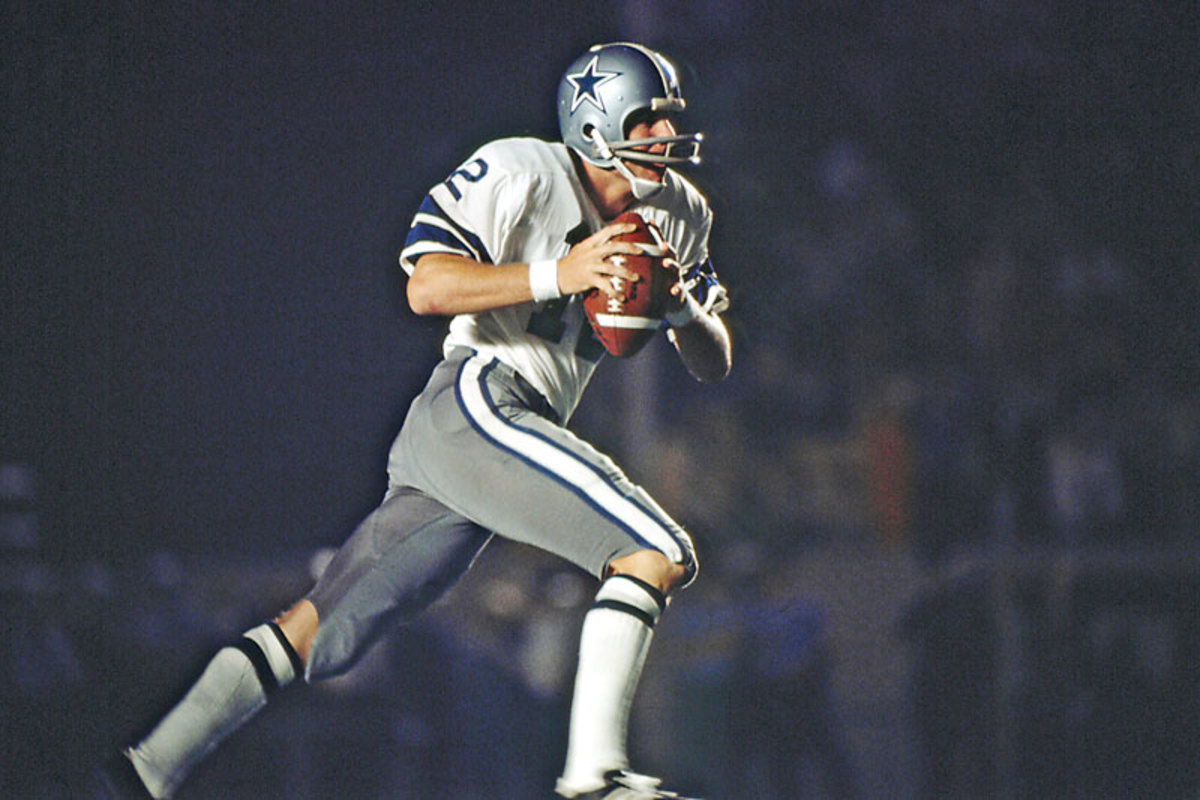
WE TOLD YOU . . . and took a shot that knocked him out of the game in the second quarter. (Walter Iooss Jr./SI)

REMIND ME, WHY ARE WE PLAYING? Bob Lilly and Tom Landry appeared less than thrilled with a game that would cost them their No. 1 quarterback. (Heinz Kluetmeier/SI)

TAGGE TEAM Lilly took out his frustration on former Nebraska QB Jerry Tagge. (Heinz Kluetmeier/SI)

FUTURE STAR Robert Newhouse of Houston, the Cowboys’ second-round pick that year, carried against the team for which he would play for 12 seasons. (Walter Iooss Jr./SI)

FILL-IN Craig Morton took over for Staubach that night, and would end up playing most of the ’72 season after Staubach separated his shoulder two weeks later. (Walter Iooss Jr.)

OUT FRONT Penn State’s Lydell Mitchell (24) led the way for Newhouse. (Heinz Kluetmeier/SI)
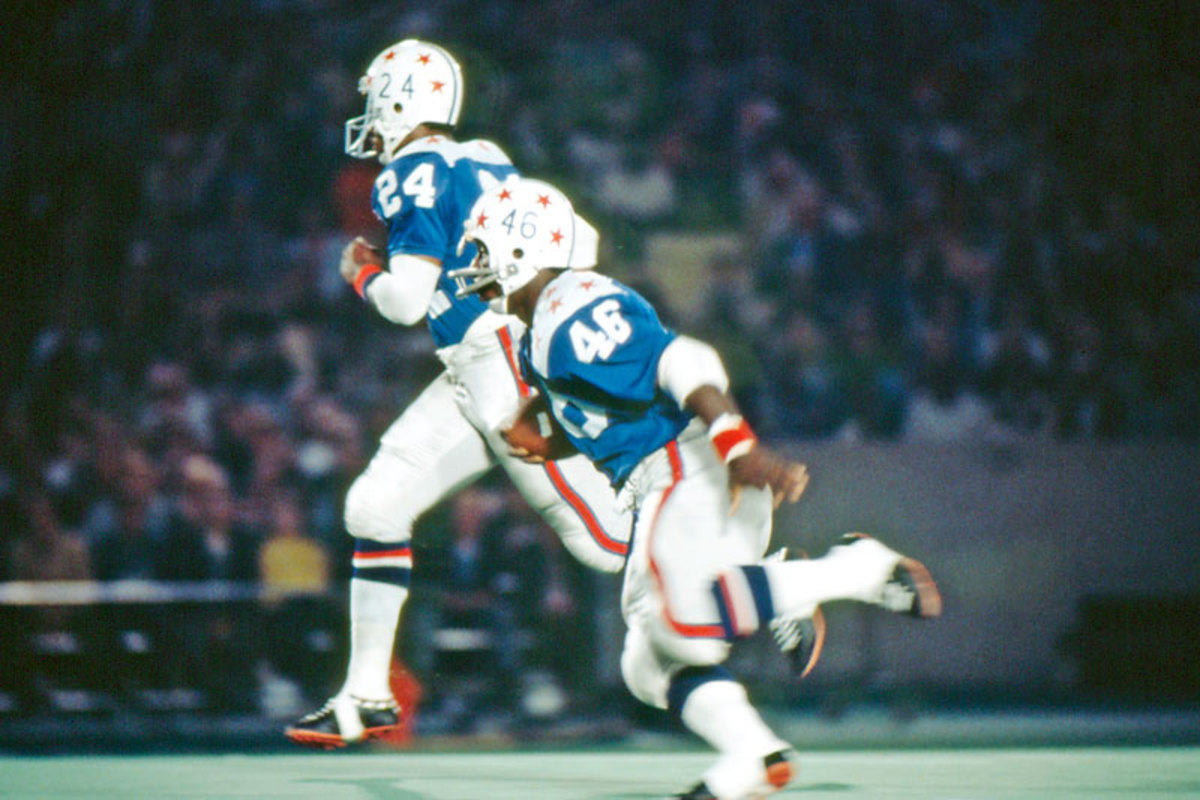
CLOSING NIGHT The game was the last in a Cowboys uniform for moody Super Bowl VI star Duane Thomas (33); he would be traded to the Chargers four days later and never play a down in the ’72 season. (Heinz Kluetmeier/SI)

EVERYBODY CHEER Morton hit Ron Sellers (88) late in the first half to put Dallas up 10-0. (Heinz Kluetmeier/SI)

GOING FOR GOLD Olympic sprint champ and future Hall-of-famer Bob Hayes sped past the kids for a TD catch to give the Boys a 17–0 third-quarter lead. (Heinz Kluetmeier/SI)
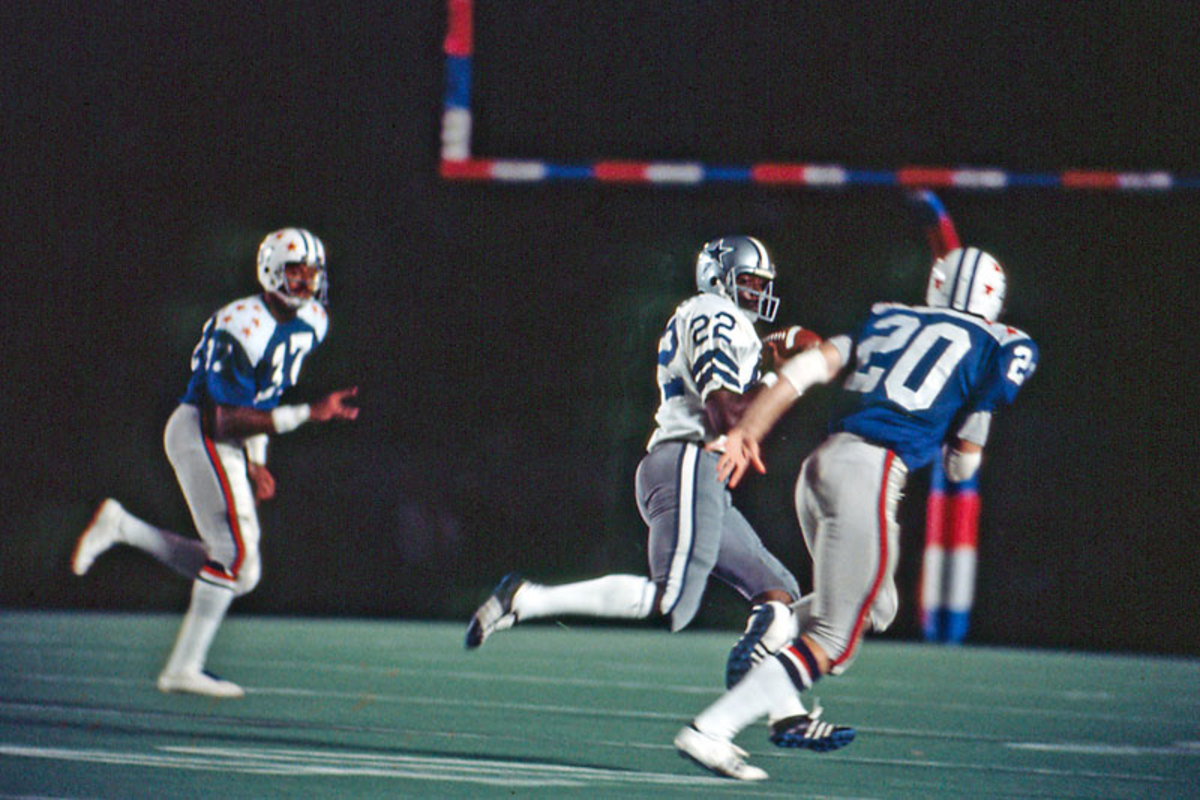
THE WAY TO 1K Calvin Hill got the jump on his first 1,000-yard season in that July ’72 game. (Walter Iooss Jr./SI)
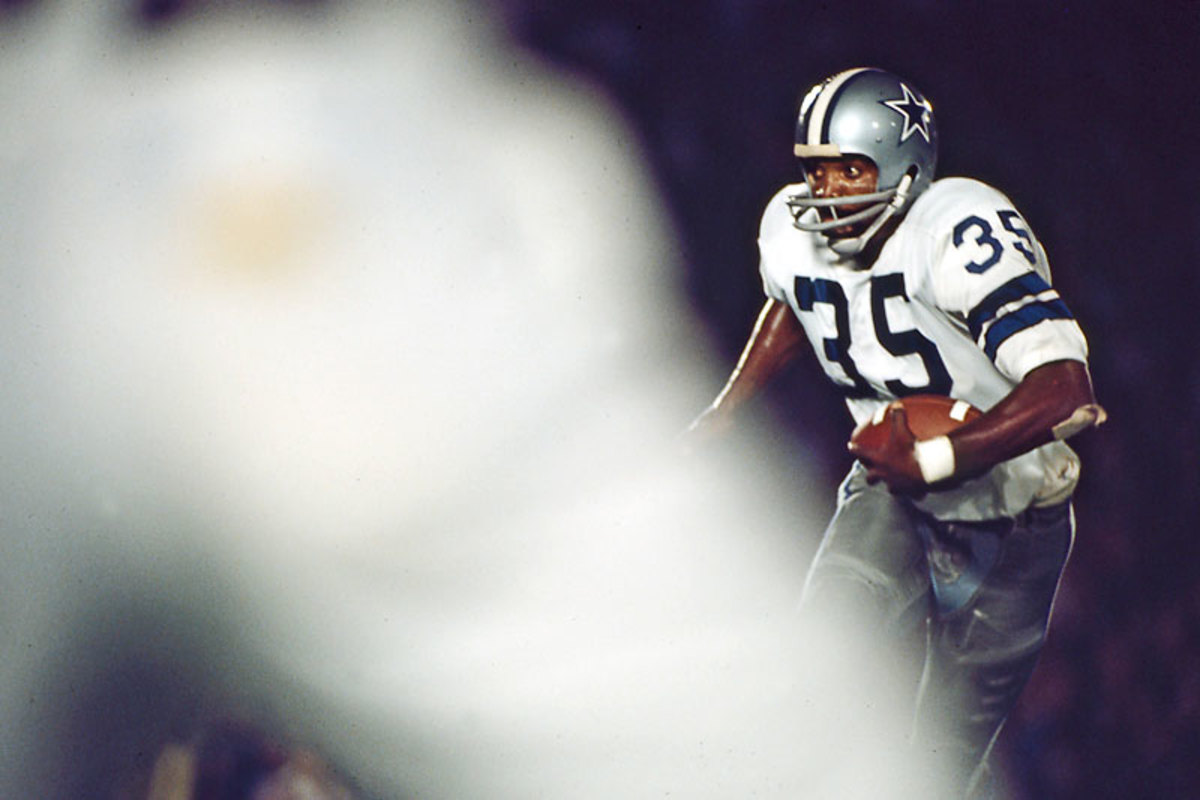
EXPECTING Hill’s son, future NBA star Grant Hill, would be born a little more than two months after Dad faced the collegians. (Heinz Kluetmeier/SI)

CONSOLATION Heisman winner Pat Sullivan (7), soon to be a Falcons flop, celebrated the late TD that made the final 20–7 Cowboys. (Heinz Kluetmeier/SI)
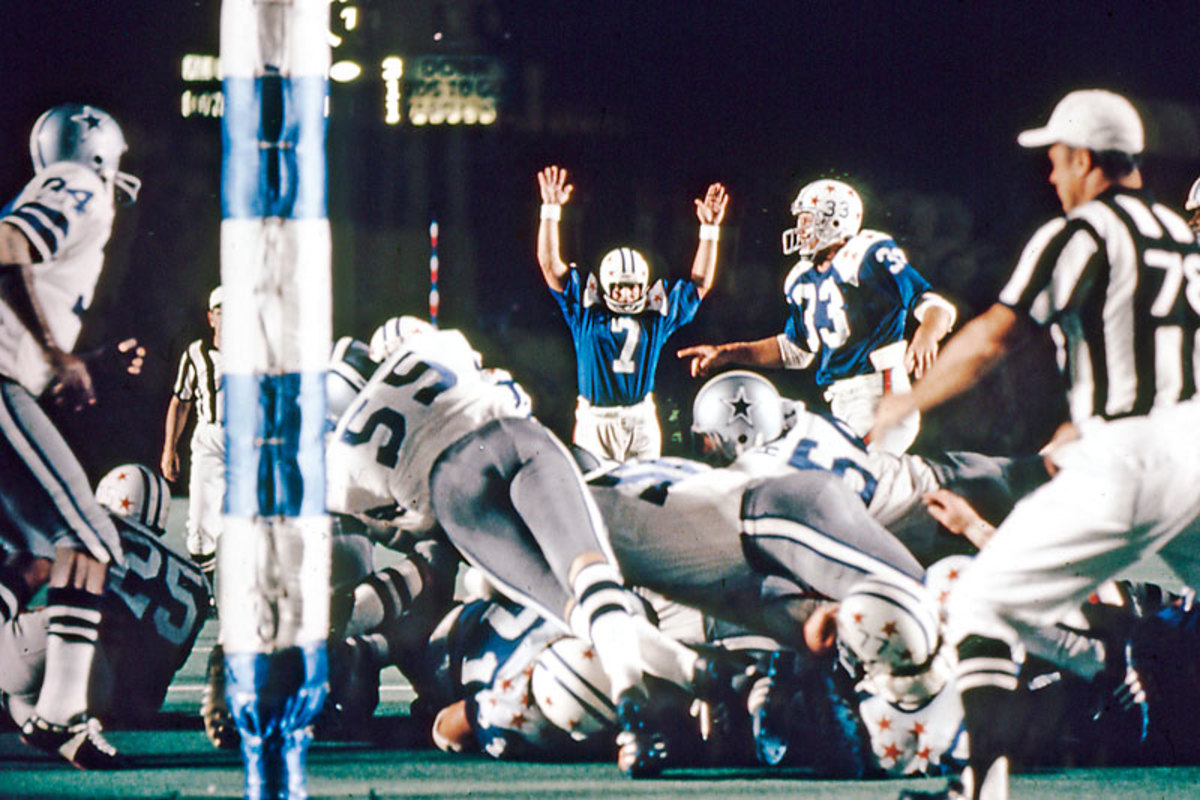
They did prove their value in one way: as test kitchens for new ideas. The sudden death rule came about in a handshake agreement between Los Angeles Rams and the New York Giants before a preseason game in 1955. In 1967 a summer matchup in which the Denver Broncos beat the Detroit Lions showed the AFL could compete with the NFL and that the impending merger of the leagues might not be as lopsided as some feared. A year later, another interleague matchup between the Houston Oilers and the Washington Redskins introduced the “action” point, which evolved into the two-point conversion we know today.
But not every innovation had staying power. The threat of Sports Illustrated writer George Plimpton relieving Lions quarterback Milt Plum during a 1963 preseason game against the Browns prompted the league to forbid the practice of reporters playing in games before halftime. A 1976 clash in Tokyo between the San Diego Chargers and St. Louis Cardinals made it seem like the league might open a portal to the far east. But the NFL hasn’t shown nearly as strong a commitment to Japan (just 12 visits since) as it has to burrowing deeper into Europe. (NFL Europe might be dead, but the annual regular season London game took root as a preseason event in 1983.) And then, of course, there’s replay, which was focus-grouped across decades of summers before the current system was installed. Last year’s college-inspired revisions to the overtime format were field-tested first in the summer. This year’s preseason brings an opportunity to see how changes to the tuck rule and crackback blocking will be officiated. Tune in!
WEAK SAUCE
While it can be a laboratory for innovation, the preseason fails to deliver football’s essential ingredients: competition and intensity. There was so little of it during the Hall of Fame game between the Cowboys and Dolphins this year that NBC’s Cris Collinsworth thought nothing of abandoning his duties to break down a YouTube video of Cowboys fourth-string quarterback Alex Tanney doing trick shots while Al Michaels, Tony Dungy and the nation looked on like zombies. The highlight of last Sunday night’s clash between the Colts and Giants was FOX’s Pam Oliver getting drilled in the face by an errant football during warm-ups. A far cry from the days of Plimpton, for sure.
The only place where a preseason game gets complete attention is at NFL headquarters, because the folks there have to watch. But even they want to make the preseason better. “One, you have a question of whether we really need [the four-game schedule] to put on the best quality product,” Roger Goodell told the San Francisco Chronicle last year. “Two, you have an issue of how fans are reacting to it. It’s not the kind of standard that the NFL is used to producing.”
It may be hard for younger generations of NFL fans to fathom, but there was a time when the league played a six-game preseason and essentially printed money by playing exhibition games.
By the time the Cowboys joined the league in 1960, teams were getting as much as $25,000 to play exhibitions in non-NFL cities. So on the road Dallas went, to Pendleton, Ore., where it met the Rams for a Sunday preseason date on a field that had been the site of a rodeo the day before. Gil Brandt, then the Cowboys’ chief talent scout, was still casing the joint when the referee arrived and inquired about the officials’ dressing room. When a member of the event staff pointed to some seats a few rows into the stands, the ref registered his immediate objection. The staffer, as Brandt recalls, snarled back, “If they’re good enough for the [rodeo] cowboys, they’re good enough for the goddamn officials!”
There was a time when the league played a six-game preseason and essentially printed money by playing exhibition games.
The Cowboys hopscotched from Seattle to San Antonio to Louisville to Pendleton to Bloomington, Min. Their six games were among the 30 played on neutral sites that year. Teams couldn’t afford to turn down the invitations from entertainment-starved municipalities. By 1971, business was booming. The realization hit Pat Toomay, a second-year defensive end, midway through the third quarter of an exhibition game against the upstart Saints at Tulane Stadium. Suddenly overwhelmed by a crowd that numbered 81,000—a record for an exhibition game—he asked someone how much revenue the game had generated; $600,000 was the guestimate. His share, as outlined by the established preseason pay schedule, was $175. Each team’s expenses, he figured, amounted to $20,000. “That’s when I thought, Oh, we’re a touring spectacle. This is about money.”
INFUSE DRAMA
So how did we end up where we are now, with a product that brings in loads of cash but that is hard to watch or to care much about? A historic television agreement in 1977 marked the beginning of the end of the league’s wanderlust, and the collective bargaining agreement that it funded led to the current schedule of 16 regular season games preceded by four preseason games. The extra money those four games bring in, combined with the introduction of revenue sharing in 2001, has made it even more cost effective for teams to stay home. Today most aren’t even going away for camp—19 of the league’s 32 teams stayed home this summer. The Hall of Fame game is the only one of the 65 preseason games to be played at a neutral site. A change of scenery at least would add a sense of occasion.
Instead, injuries do.
Clinton Portis wore a sling after dislocating his shoulder in Washington's first preseason game in 2006, an injury that forced him to miss the first half of the season.

Seven years ago Clinton Portis entered the season as more than just Washington’s top tailback; the fourth-year vet was the entire offense. The previous year he set a club record with 1,516 yards on the strength of nine 100-yard games, a streak that helped carry Washington to its first playoff berth in six years. New offensive coordinator Al Saunders, the triggerman behind the Priest Holmes-led rushing attacks in Kansas City, planned to feature Portis even more. Portis had tried everything to get out of playing an early road preseason game against the Cincinnati Bengals. But he was assured the game would be choreographed in such a way to keep him from getting hurt.
That all went out the window on the game’s 13th play, when quarterback Mark Brunell threw an interception to Keiwan Ratliff. He might have scored if Portis, whose gamer instincts wouldn’t allow him to watch idly as the play unfolded, hadn’t ran Keiwan down and snuffed out the play after a 52-yard gain. In the process, Portis dislocated his right shoulder and ended up missing half the season. The Redskins finished 5-11 and made the playoffs just once more over the remaining four seasons of his career.
Since then, “I’ve always been against the preseason,” says Portis, who finished with 523 yards that year. Instead of risking the potential loss of a starter early in the summer, he wonders, why not flip the script? “The preseason should be used to evaluate new talent, the people that are trying to make it,” he says. “And you don’t need but two or three games to evaluate that talent. Just play the guys who are trying to make the team.”
Hard Knocks
